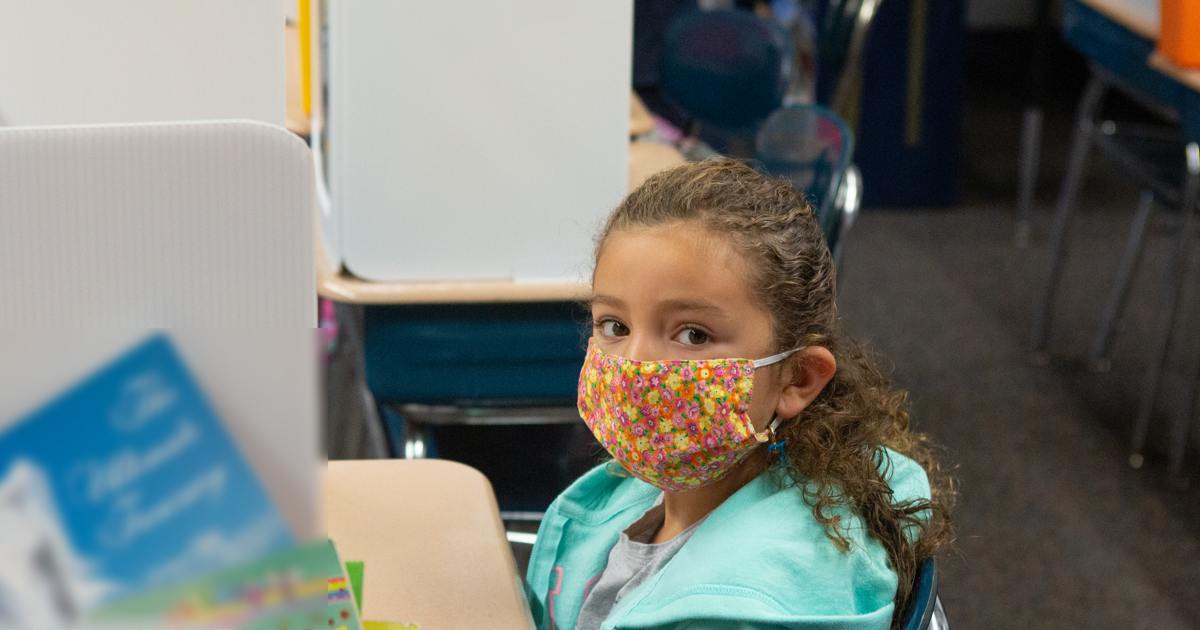
CDC Guidance on School Reopenings
New guidance from the CDC, plus negotiations for COVID relief, and an extension to school meal flexibility from the USDA.
Topics: Advocacy and Legislation, Pandemic Leadership
CDC Guidance And Virtual Forum
On Sept. 15, the Centers for Disease Control and Prevention (CDC) released new guidance on safe school reopenings, which includes concrete indicators for communities and schools to consider before reopening for in-person instruction.
NAESP has partnered with the CDC on a virtual forum, “Recommendations on Safe School Reopenings, COVID Testing in Schools, and In-School Mitigation Strategies,” on Wednesday, Oct. 7 at 4 p.m. ET, to hear the latest recommendations for safe school reopenings. Register now.
Negotiations On COVID-19 Relief For Schools Continue
After months of back-and-forth negotiations on additional funding for COVID-19 response, talks between Congress and the Trump administration heated up this week. Until now, the two sides have been at loggerheads with Democrats seeking more stimulus funds and Republicans pushing for a lower number. A significant hang-up has been disagreement about how much support to provide state and local governments. In recent days, the Trump administration has signaled a willingness to increase their offer, while congressional Democrats indicated an openness to lower their number. The gap between the two sides—in the range of $500 billion—would need to be bridged in order for a deal to be reached.
Since March, NAESP has urged Congress to include $175 billion in COVID-19 relief for K-12 schools in the next relief package. In addition to significant short-term costs—everything from PPE, staffing needs, transportation, and remote learning—schools will likely see significant decreases in state funding for K-12 in the coming months. These dynamics create significant urgency for federal support. With the passage of the CARES Act in March, schools and districts received $13 billion in immediate relief. Six months later, however, as the needs on the ground have only increased, no additional federal support for schools has been provided. Over the past few months, the two sides have put forward their respective COVID relief proposals:
- Senate Republicans’ COVID Relief Bill: On Sept. 8, Senate Republicans passed a COVID relief bill that included $70 billion for K-12 schools, $46 billion of which would only be available to schools that provide in-person instruction (schools operating under a hybrid model would receive reduced funding on a pro-rata basis). NAESP opposes efforts to condition federal funding on reopening status.
- House Democrats’ COVID Relief Bill: On Sept. 28, House Democrats released a COVID relief bill, with $175 billion for K-12 schools. It doesn’t require schools to provide in-person instruction to receive funding. The bill also includes $12 billion for the E-Rate program to help to address the “homework gap” and $5 billion for schools to improve ventilation systems in schools to help protect against the spread of the coronavirus.
What’s next? All eyes are on Treasury Secretary Steve Mnunchin, the lead negotiator for the Trump administration, and Speaker Nancy Pelosi to see if a deal can be reached in the coming days. With Congress set to gavel out soon, and not returning until after the November elections, time is running short.
Continuing Resolution
On Wednesday, Sept. 30, the Senate passed and the president signed House legislation to extend government funding through Dec. 11.
COVID-19 In Schools Real-Time Dashboard
NAESP has joined AASA, NASSP, and Brown University to create a first-of-its-kind nationwide project to systematically map schools’ responses to the pandemic. The new National COVID-19 School Response Dashboard is a real-time dashboard that empowers school leaders, policymakers, and the general public to examine current conditions in their own region, see comparisons, and then make data-driven teaching and learning decisions as they continue to navigate the 2020-21 school year. The project will collect baseline information on schools as the year starts, and then follow them over time to record enrollments, staffing and COVID-19 cases. We know principals are busy, so the data entry process is straightforward and quick. Enroll your school.
School Meals Flexibilities Extended Through Sept. 30, 2021
This spring, the U.S. Department of Agriculture provided nationwide child nutrition waivers giving schools and districts flexibility to provide meals to students in need even if schools were not operating in-person classes. The waivers had been set to expire Dec. 31, 2020. Included in the continuing resolution that passed this week is an extension of these “non-congregate” flexibilities through Sept. 30, 2021.
Equitable Services Rule
On Sept. 25, Secretary of Education Betsy DeVos sent a letter to state school chiefs indicating the Department of Education would not appeal a decision by a federal judge that blocked her effort to route coronavirus aid to private schools through a mechanism known as “equitable services.” The letter effectively ends the DeVos’push to divert these funds to private schools. NAESP has for months pushed back on the department’s “equitable services” push.

